There is a huge variety of modern cutting materials available. And the manufacturing methods are as modern as the cutting agents themselves. Carbide tips are often manufactured using the sintering method. This process does allow less material to be used for the tips, but the final product quality required can usually not be achieved. The DDS-XRE double face grinding machine made by DISKUS WERKE Schleiftechnik GmbH machines the tips efficiently and precisely to the required final dimension using plunge cut grinding and special planetary kinematics. For smaller tips with less demanding machining quality requirements, the machine can be converted to even more efficient throughfeed grinding technology very quickly.
The major benefits of the sintering method are obvious. Extremely sturdy high-density components can be manufactured with minimum use of material and lower energy consumption. Machining steps which give the component its final shape are no longer required. Using the sintering process to manufacture flat faces in accordance with the required final dimension is not possible due to loss of the shape, position and dimensional tolerances of the carbide green body. The high efficiency and precision of the machining results means that many tool manufacturers rely on the tried-and-trusted Diskus grinding or double face-grinding method for the hard-fine machining of cutting plates.
Planetary kinematics guarantee high material removal rate
DISKUS WERKE Schleiftechnik GmbH from Dietzenbach/Germany excels as a pioneer in this field and even had the method named after it. The machine series DDS-XRE is equipped with a special planetary kinematics and can be converted from through-feed to plunge cut grinding with manageable effort. For plunge cut grinding, the workpieces are loose in the workpiece seats, which are also known as masks. These masks rotate with the workpieces in a circle around their own axis, in other words around the center of the mask. For material removal, a grinding tool is set to the thickness dimension required. The DDS-XRE is equipped with three masks which are in simultaneous use; each mask has a separate servo drive. While one mask is being loaded, the second mask is in the grinding process. The plunge cut grinding operation is carried out in a few seconds, resulting in a high material removal rate. The finished ground workpieces in the third mask are measured in terms of their thickness tolerance using the process control computer DISKUS IONIC 18 and then unloaded. The measurement results are used for fine-tuning the face-grinding machine so that the grinding process can be adapted if necessary. In the most straightforward case, unloading is via a chute onto a discharge belt. Loading and unloading can also be automated with the aid of a Scara robot.
Gentler material removal
The DDS-XRE machines have two grinding spindles opposite one another. The path-controlled feeding only takes place through the upper grinding tool however. Since the feed drive is electro-mechanical, the feed speed can vary from the blank dimension to the finished dimension, and be adapted depending on the sensitivity of the workpiece shape. This means the metal-cutting process can be graduated between roughening, finishing and a “sparking out” process. During sparking out there are no more feed movements in order to relax all the elastic distortions both on the workpiece and the machine components involved as far as possible. The sparking out phase is decisive for the final quality of the workpiece to be ground.
No perceivable heating of the workpieces
During face-side grinding, material is removed gently with a uniform load on the whole functional area thanks to largesurface machining. The deviation of the evenness achieved is less than 0.003 mm for indexable inserts for instance. In the size range of 0.2 to 0.3 mm, the output for indexable inserts with an edge length of about 15 mm is 2000-2500 workpieces per hour. This means the material removal rate is approx. 90 mm3/sec. Since the workpieces do not heat up during Diskus grinding, there is no temperature- related distortion or structural changes. Thanks to a special set-up, the machining of only one side of the workpiece is also possible using a DDS-XRE double-side facegrinding machine without a great deal of retooling being necessary. The evenness achieved for normal cutting plate sizes is 0.002 mm, whereby the hourly output rate is about 1500 workpieces.

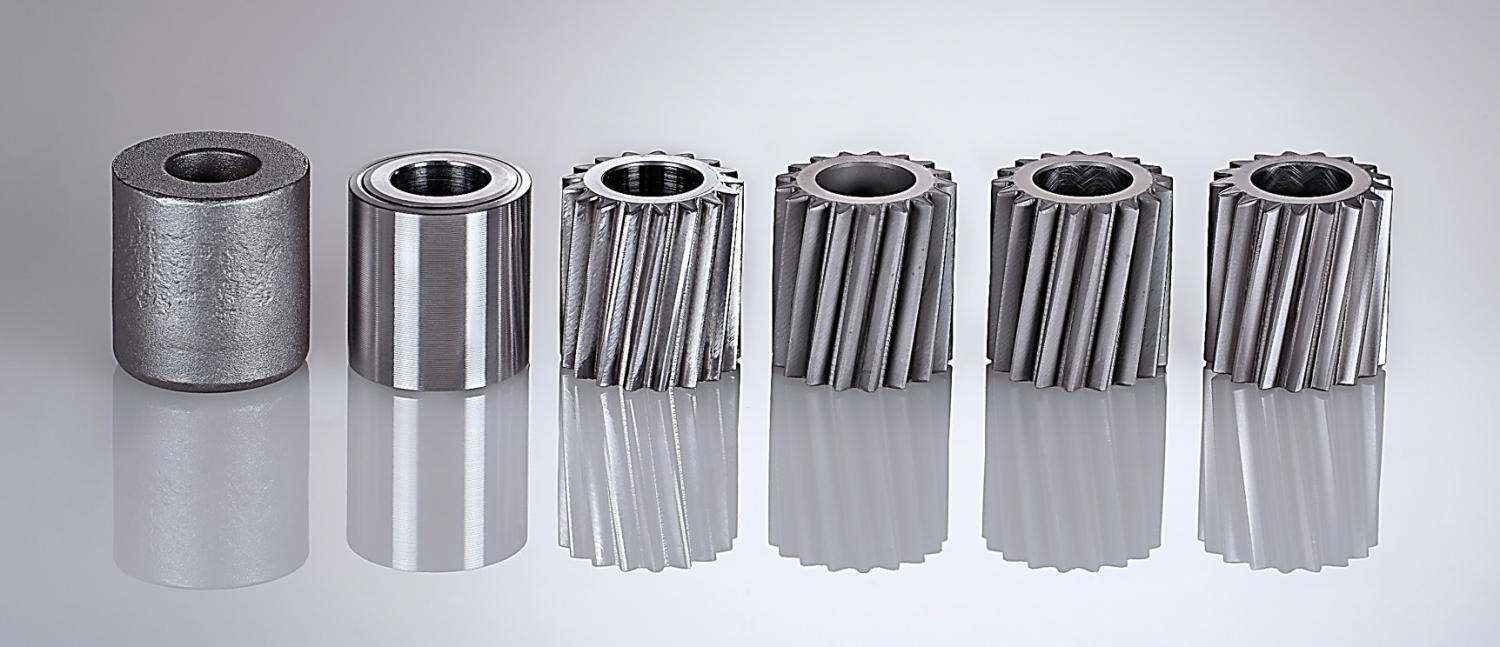

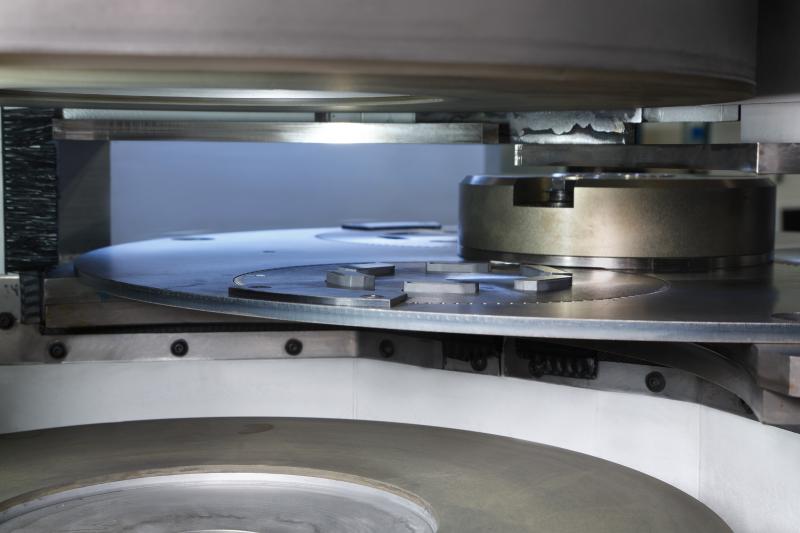
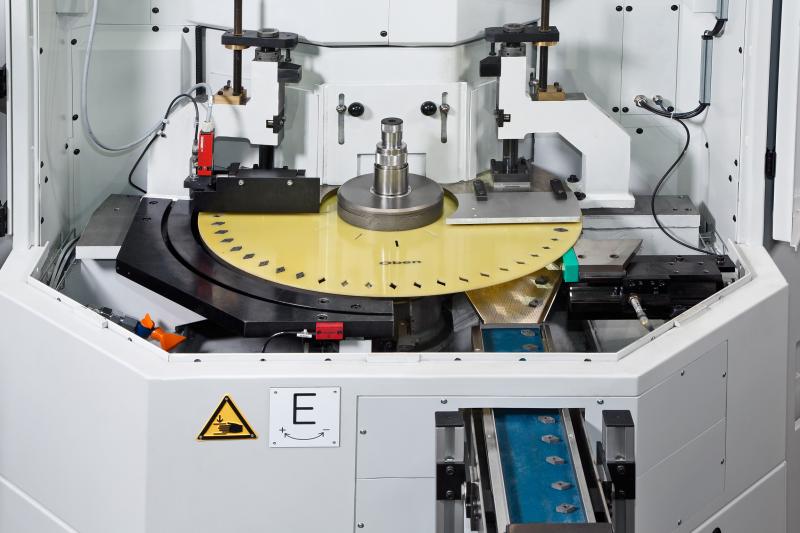
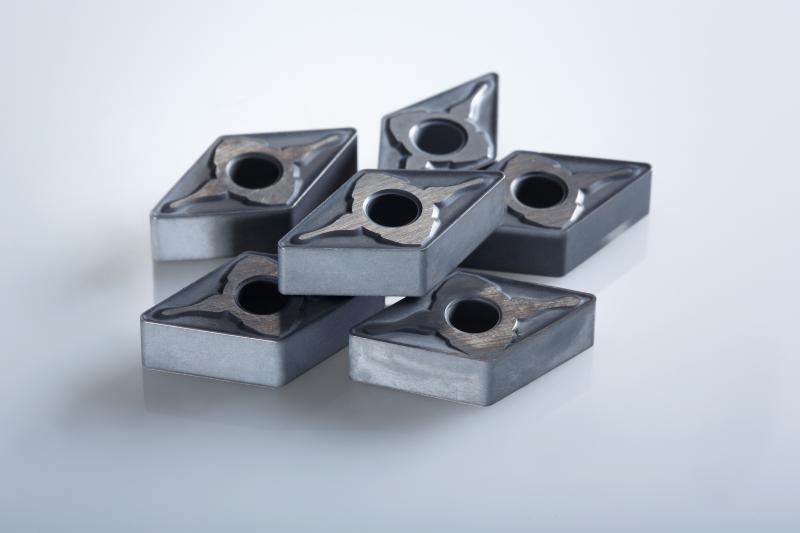
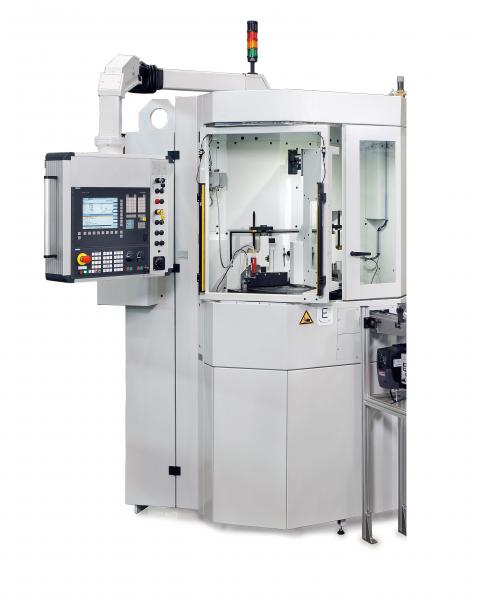
 Germany
Germany 